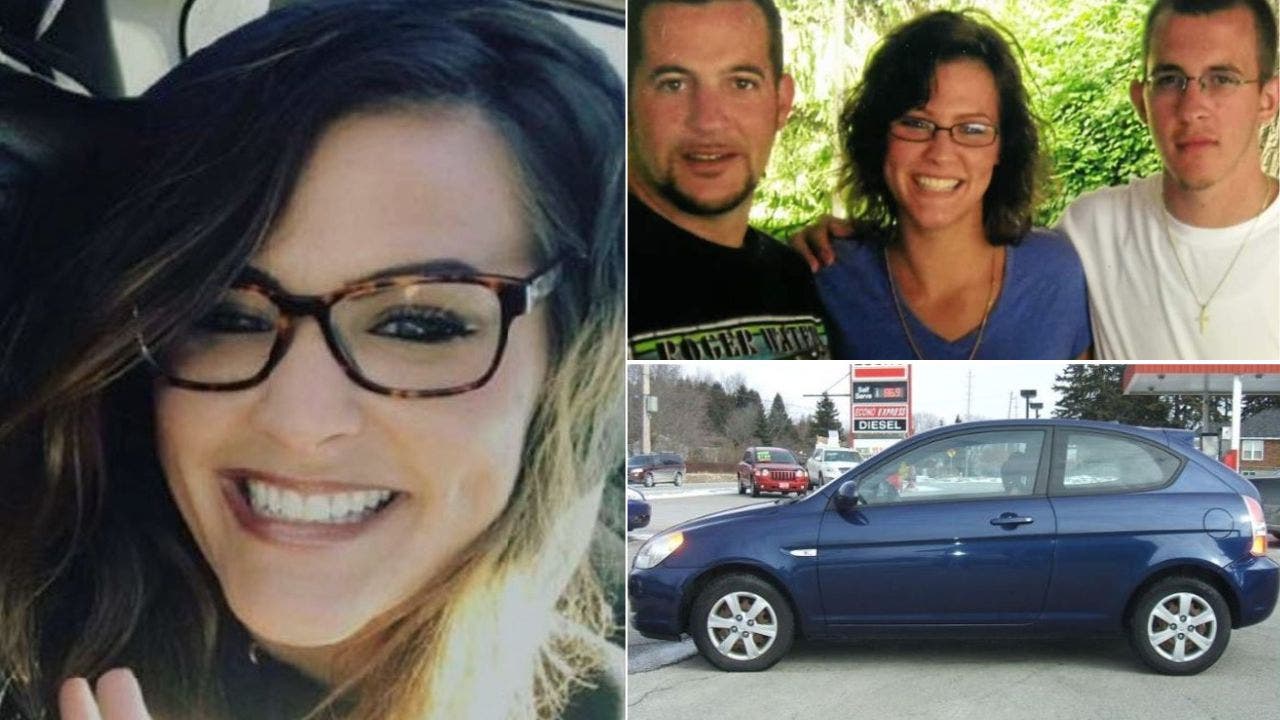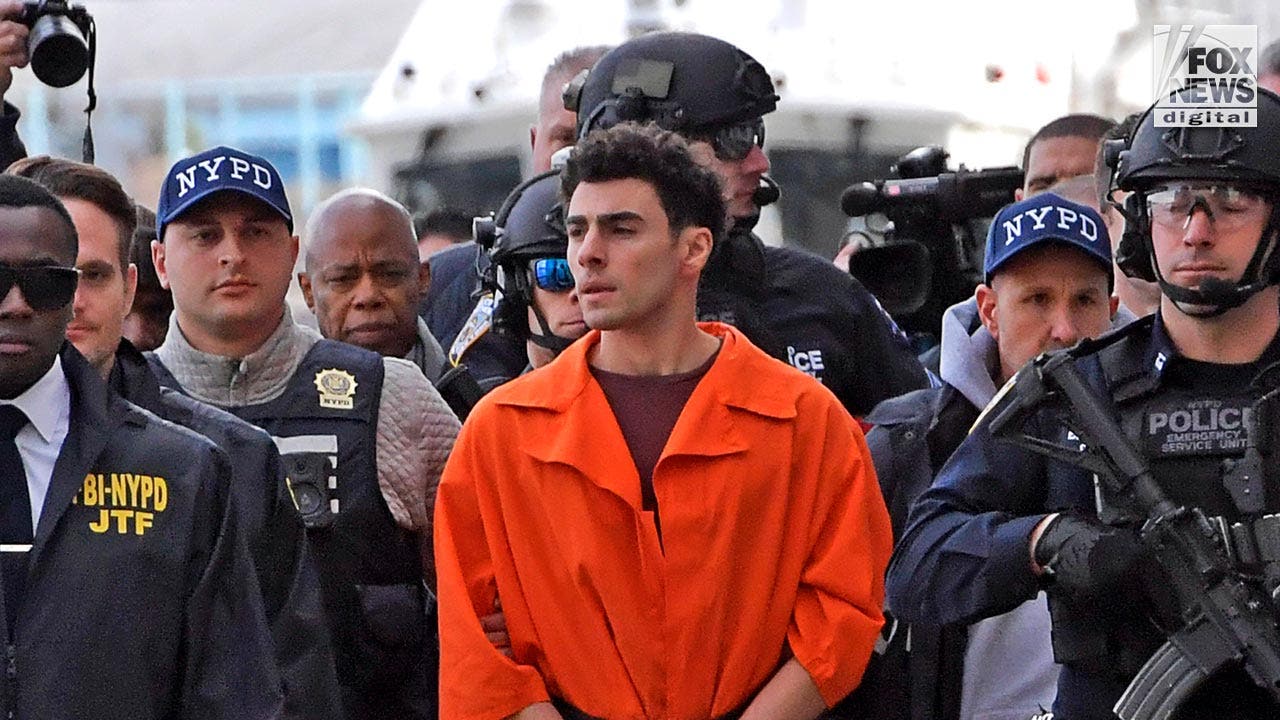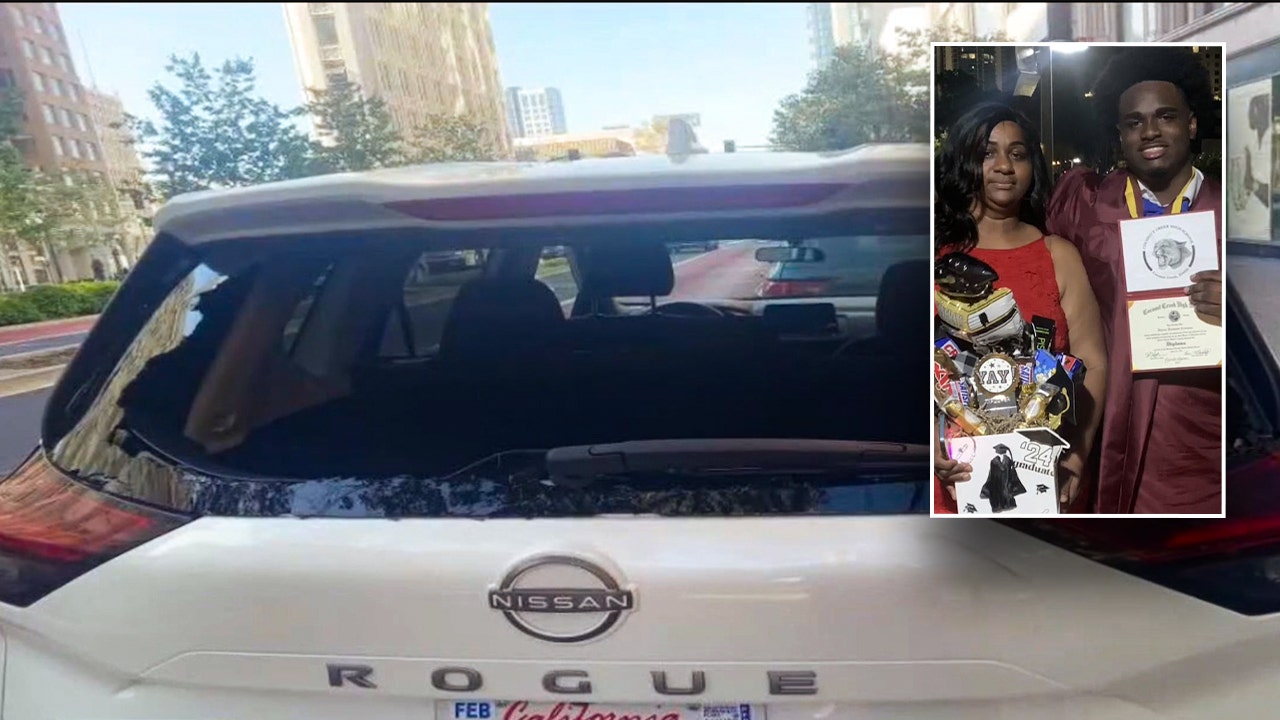When Diane Scheig’s father, Bill, came home from work at the Mallinckrodt factory in St. Louis, he would strip down in their garage and hand his clothes to her mother to immediately wash, not daring to contaminate the house with the residue of his labors.
Mr. Scheig, an ironworker who helped build the city’s famous arch, never told their family exactly what he was doing at the plant, where scientists first began processing uranium for the Manhattan Project in 1942. But by the age of 49, he had developed kidney cancer, lost his ability to walk, and died.
Decades later, Diane’s older sister Sheryle, who years earlier had given birth to a baby boy born with a softball-sized tumor in his stomach, died of brain and lung cancer at 54. Her neighbor two doors down died of appendix cancer at 49. So many of her classmates have died of cancer that a large round table covered with their pictures is now a staple of her high school reunions.
“I know for myself, I was thankful when I passed the age of 49,” Ms. Scheig said. “And I was thankful when I passed the age of 54.”
The Mallinckrodt plant processed the uranium that allowed scientists at the University of Chicago to produce the first man-made controlled nuclear reaction, paving the way for the first atomic bomb.
But the factory — and the program it served — left another legacy: A plague of cancer, autoimmune diseases and other mysterious illnesses has ripped through generations of families like Ms. Scheig’s in St. Louis, and other communities across the country that were exposed to the materials used to power the nuclear arms race.
Now Congress is working on legislation that would allow people harmed by the program but so far shut out of a federal law enacted to aid its victims — including in New Mexico, Arizona, Tennessee and Washington state — to receive federal compensation.
A Toxic Legacy
In the 1940s, as workers churned out 50,000 tons of uranium to feed the nation’s nascent atomic arsenal, the factory was also spitting out heaps of nuclear waste.
Over the next several decades, hundreds of thousands of tons of radioactive waste stored in open steel drums were hauled and dumped across the city. The waste seeped into large swaths of soil, including on land that later became ball fields.
And it drained into Coldwater Creek, a tributary that snakes through the metropolitan area for 19 miles through backyards and public parks where children play and catch crayfish. In heavy storms, the creek routinely floods.
There are similar stories across the country, among the Navajo workers in New Mexico and Arizona who were sent into mines with a bucket and a shovel to dig up uranium and were never told about the dangers; the children of workers at uranium processing plants in Tennessee and Washington state; and the downwinders across the Southwest who breathed in the fallout from the mushroom clouds of aboveground tests.
None of those communities qualify for aid under the only federal law to compensate civilians who sustained serious illnesses from the nation’s nuclear weapons program. Passed in 1990, that statute was narrowly constructed to help some uranium miners and a handful of communities who were present for aboveground testing. Claimants, who can include children or grandchildren of those who would have benefited from the program but have since died, receive a one-time payment of $50,000 to $100,000.
The Senate earlier this month passed legislation led by Senator Josh Hawley, Republican of Missouri, and Senator Ben Ray Luján, Democrat of New Mexico, that would update and dramatically expand the law to include thousands of new participants, including Missouri families like the Scheigs.
If Congress does not pass the bill before June, the law will expire altogether, shuttering the fund for those who are currently eligible and cutting off access to cancer screening clinics in neighborhoods that have been hit hard by radioactive exposure and rely on federal money to continue operating.
To read their legislation is to visualize a map of the physical and psychic toll the nation’s nuclear weapons’ legacy has seared into communities across the country, years after the first atomic test at Los Alamos.
“It speaks to the enormity of the burden,” Mr. Hawley, a conservative Republican who is up for re-election this year, said in an interview. “It speaks to the heroism of these people who, for 50-plus years in almost all these cases, have borne the burden themselves. Some of my colleagues complained about the cost. Well, who do they think is bearing the cost now?”
For years, momentum to expand the nuclear compensation program had sputtered along in fits and starts on Capitol Hill, adopted by various lawmakers who inched it forward but were not able to secure a vote in the House or Senate.
But it got a shot in the arm when Mr. Hawley took up the issue, working with Mr. Luján to draft legislation and using his perch on the Armed Services Committee to attach it to the annual defense policy bill.
When the measure was stripped out of the final version of the legislation after Republicans objected to its hefty price tag, which congressional scorekeepers estimated could hit $140 billion, the senators went back to the drawing board. Cutting out expansive new provisions that would have forced the federal government to cover victims’ medical fees, Mr. Hawley and Mr. Luján also added new communities, enticing more senators to support the bill now that it would benefit their states.
When the measure finally got a vote on the Senate floor last month — made possible after some horse-trading between Mr. Hawley and Senator Mitch McConnell, Republican of Kentucky and the minority leader — it passed 69 to 30.
‘Bleeding Through’
St. Louis’s radioactive fate was decided over lunch at the elite Noonday Club in the city’s downtown in 1942, when Arthur Compton, a top administrator of the Manhattan Project and the former head of physics at Washington University met with Edward Mallinckrodt Jr., a scientist who ran his family’s chemical and pharmaceutical company. Three other companies had already refused Mr. Compton’s request — to begin refining uranium for the development of the bomb. Mr. Mallinckrodt, a longtime friend of Mr. Compton, said yes.
Eight decades later, the consequences of that decision are immediately visible on a drive through St. Louis. Cleanup of the creek is expected to take until 2038, according to The Missouri Independent.
At the site of the old airport, where the first radioactive waste from the plant was stored, workers clad in white Tyvek hazardous materials suits with bright yellow boots can be seen from the highway, digging into the ground behind fences adorned with yellow warning signs and next to rail cars loaded with contaminated soil.
Some miles down is the West Lake landfill, a pit holding thousands of tons of radioactive waste that originated at Mallinckrodt and was illegally dumped in an area now surrounded by chain restaurants, warehouses, and a hospital. By 2010, a growing underground fire about 1,000 feet from the radioactive material was discovered.
Around the same time, Kim Visintine, an engineer-turned-medical professional, began to realize in conversations with friends that the rate at which their families and classmates were falling ill with serious, rare cancers “was just historically way beyond the norm,” she said. Ms. Visintine’s son, Zach, was born with glioblastoma — the most aggressive type of brain tumor — and died at age 6.
She started a Facebook page called “Coldwater Creek — Just the Facts” and began mapping reports of serious illnesses linked to radiation, coloring in heavily affected neighborhoods in shades of red. There were soon thousands of examples.
“It just looked like it was bleeding through,” Ms. Visintine said of the red on the maps.
Thumbs Up or Thumbs Down
The illnesses have stretched across the city, and reached deep into family trees.
Carl Chappell’s father, a chemical operator, used to walk to work at the plant in the early 1950s, until he began working at the company’s sprawling Hematite facility, where scientists researched and produced high-enriched nuclear fuel. It was there, in 1956, that his father was exposed to a radiation spill.
“We didn’t know that that was radioactive,” Mr. Chappell recalled in an interview. “All we knew was he was exposed to some toxic chemical spill and hospitalized for a few days or several days down there until he was released to come home.”
Eight years later, his father was diagnosed with renal cancer. Within another eight years, he had died. He was 48.
Decades later, at the age of 40, Mr. Chappell’s son Stephen was diagnosed with a rare kind of mucinous cancer that began in his appendix and spread throughout his abdomen. He died at 44.
For some families, developing cancer feels inevitable. Kay Hake’s father, Marvin, was an engineer at the Mallinckrodt plant and survived bladder, prostate and skin cancer. Her husband, John, who worked as a heavy equipment operator, was among a team of workers dispatched years ago to help clean up toxic waste from another of Mallinckrodt’s uranium plants. Sometimes he was given protective equipment to wear, but other times he was not.
“Every time we get sick, we think it’s probably cancer,” Mr. Hake said in a recent interview over coffee. “Sometimes we’re planning for the future and it’s like, ‘Let’s not plan too far and try to enjoy our lives more.’ Because we don’t know if we’re going to make it.”
“It’s not if it’s going to happen,” Ms. Hake added. “It’s when.”
Christen Commuso, who grew up near the creek and has lobbied extensively for the expansion of the program through her work for the Missouri Coalition for the Environment, has found a small comfort in hoping that the suffering in her family will stop with her.
After Ms. Commuso developed thyroid cancer, doctors removed her thyroid, adrenal gland, gallbladder and eventually her uterus. At first, Ms. Commuso said in an interview, she “really mourned the loss of my ability to have my own children.”
“But at the same time, there’s a part of me that feels like well, maybe it was a blessing in disguise,” she added. “Because I didn’t pass something down to a new generation.”
She was in the Senate chamber in March when lawmakers approved the legislation to expand the Radiation Exposure Compensation Act to cover Missourians like her. Just the provision in the existing law to fund screening clinics for survivors would help, she said, because she sometimes skips doctor’s appointments when she cannot afford them.
“I wanted to clap and scream and holler” when it passed, Ms. Commuso said.
But she also found it jarring to see how nonchalant senators were as they voted on her fate — with a customary thumbs up or thumbs down to the Senate clerk.
“To watch people kind of give a thumbs up or a thumbs down on your life — and does your life matter to them? It’s like, what do you have to say and do to convince people that you matter?”






